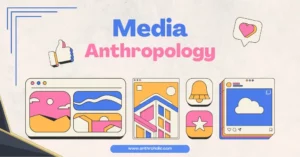AI Answer Evaluation Platform Live Now. Try Free Answer Evaluation Now
Divorce and Dissolution of Marriage
Divorce, an event that terminates a marital union, carries different meanings across cultures, with its social implications rooted in diverse cultural values and norms.

Cultural Understandings of Divorce
Divorce as a Social Phenomenon
Divorce is not merely an individual or a private matter, but a social phenomenon deeply entwined with cultural norms, values, and expectations. Its perception varies across different societies and cultures, depending on their societal structures, belief systems, and history [1].
Western Cultures
In many Western societies, such as the United States and parts of Europe, divorce is seen as an individual right. It is often viewed as a necessary means to personal fulfillment and happiness when the marriage becomes unsatisfactory. The high divorce rates in these societies are attributed to the emphasis on individualism and personal freedom [2].
Eastern Cultures
In contrast, Eastern cultures like those in Asia often place a high value on marital stability and family cohesion. Divorce, therefore, might be stigmatized and seen as a failure to maintain family harmony. It is important to note, however, that these perceptions are changing in some Eastern societies due to increasing westernization and urbanization [3].
Global Divorce Rates
It is helpful to view divorce rates in a table to gain insights into how different societies perceive and manage marital dissolutions. Please note that these rates are affected by a multitude of factors, including cultural, economic, and legal contexts [4].
| Country | Divorce Rate (%) |
|---|---|
| United States | 46 |
| Russia | 60 |
| Japan | 36 |
| India | 1 |
| Saudi Arabia | 20 |
Factors Influencing Divorce
Understanding the reasons behind divorce requires taking into account a multitude of factors:
- Economic Factors: Financial instability and disagreements over monetary issues often trigger divorce. Socio-economic status also influences divorce rates, with higher rates generally observed among lower-income groups [5].
- Individualism: Societies that value individualism and personal freedom tend to have higher divorce rates, reflecting the emphasis on personal happiness over societal or familial expectations [6].
- Gender Roles: Traditional gender roles can play a part in divorce. In societies where women are gaining more independence, they are more likely to initiate divorce due to increased financial independence and shifting societal attitudes [7].
Consequences of Divorce
Divorce can have both negative and positive impacts:
- On Individuals: For individuals, divorce can result in emotional distress, financial difficulties, and changes in living arrangements. However, it can also bring relief from a problematic marriage and an opportunity for personal growth [8].
- On Children: Children may experience difficulties such as academic problems and emotional distress due to their parents’ divorce. However, some children may benefit from reduced family conflict post-divorce [9].
The Role of Law in Divorce
The legal aspects of divorce also play a significant role in its cultural understanding. Law, being a codified representation of societal norms and values, reflects and shapes how a culture views divorce.
- Legal Accessibility: The ease or difficulty of obtaining a divorce can significantly affect its prevalence and societal acceptance. For instance, in countries like the Philippines and the Vatican City, divorce is illegal, reflecting the societal and religious values that prioritize marital permanence [10]. In contrast, countries like Sweden, which offers ‘no-fault’ divorces, shows societal acceptance of marital dissolution [11].
- Legal Consequences: The legal aftermath of divorce—alimony, child custody, property division—is another crucial aspect. Different legal systems treat these matters differently, again reflecting cultural norms. For instance, in some societies, child custody is predominantly awarded to mothers, reflecting traditional gender roles [12]. Other societies may strive for more gender-neutral laws, emphasizing shared custody [13].
Cultural Change and Divorce
One of the fascinating aspects of studying divorce from a cultural anthropology perspective is observing how cultural shifts influence divorce patterns and attitudes.
- Modernization and Divorce: As societies modernize, traditional structures and values often change, leading to shifts in divorce rates and societal reactions to divorce. For instance, increased urbanization and industrialization often lead to an increase in divorce rates due to changing social dynamics and values [14].
- Globalization and Divorce: Globalization can also impact divorce rates. As cultures intersect and influence one another, attitudes towards divorce can change. Countries with traditionally low divorce rates may see increases due to exposure to other cultures where divorce is more accepted [15].
Cultural Implications of Divorce
Divorce can also have far-reaching cultural implications:
- Changing Family Structures: Divorce leads to new family configurations, including single-parent households, stepfamilies, and co-parenting arrangements. These evolving family structures can, over time, influence societal norms and expectations [16].
- Gender Dynamics: Divorce can also influence gender dynamics within a society. As mentioned earlier, women’s increasing financial independence often leads to a higher likelihood of initiating divorce. This shift can influence societal perceptions of gender roles and equality [17].
- Social Stigma: The stigma associated with divorce varies across cultures. In societies where divorce is common, it may carry less stigma than in societies where it’s infrequent. Over time, societal attitudes can shift, and the stigma may lessen [18].
Conclusion
From a cultural anthropology perspective, divorce is a complex social phenomenon shaped by cultural norms, societal expectations, and individual values. It holds different meanings across cultures and carries various consequences for individuals and families. To fully grasp its implications, it’s crucial to appreciate the cultural contexts in which divorce occurs.
References
[1] Ember, Carol R., and Melvin Ember. “Cultural Anthropology.” Prentice Hall, 2007.
[2] Amato, Paul R. “The Consequences of Divorce for Adults and Children.” Journal of Marriage and Family, vol. 62, no. 4, 2000, pp. 1269–1287. https://www.jstor.org/stable/1566735
[3] Jones, Gavin W. “Divorce in Asia: A Comparative Study of Marital Dissolution in East and Southeast Asian Countries.” Asian Journal of Social Science, vol. 46, no. 3, 2018, pp. 275–305. http://dx.doi.org/10.1163/156853111X619210
[4] “Divorce Rates Around the World: A Love Story.” World Government Summit, 2020.
[5] Amato, Paul R., and Brett Beattie. “Does the Unemployment Rate Affect the Divorce Rate?” Social Science Research, vol. 41, no. 4, 2012, pp. 705–715.
[6] Lesthaeghe, Ron. “The Second Demographic Transition: A Concise Overview of its Development.” Proceedings of the National Academy of Sciences, vol. 111, no. 51, 2014, pp. 18112–18115.
[7] Kalmijn, Matthijs, and Anne-Rigt Poortman. “His or Her Divorce? The Gendered Nature of Divorce and its Determinants.” European Sociological Review, vol. 22, no. 2, 2006, pp. 201–214.
[8] Amato, Paul R. “The Consequences of Divorce for Adults and Children.” Journal of Marriage and Family, vol. 62, no. 4, 2000, pp. 1269–1287.
[9] Hetherington, E. Mavis, and John Kelly. “For Better or for Worse: Divorce Reconsidered.” WW Norton & Company, 2002.
[10] Lacanilao, F. “Divorce in the Philippines: A Subtle Cry for Help.” Journal of Family Law and Divorce, vol. 1, no. 1, 2020.
[11] Singer, Jane B. “Swedish Divorce: A System That Works.” Journal of Family Law, vol. 27, no. 3, 1988-1989, pp. 565-576.
[12] Warshak, Richard A. “Social Science and Children’s Best Interests in Relocation Cases: Burgess Revisited.” Family Law Quarterly, vol. 34, no. 1, 2000, pp. 83–113.
[13] Bastaits, Kim, et al. “Post-Divorce Custody Arrangements and Binuclear Family Structures of Flemish Adolescents.” Demographic Research, vol. 26, 2012, pp. 471–504.
[14] Kalmijn, Matthijs. “Explaining Cross-National Differences in Marriage, Cohabitation, and Divorce in Europe, 1990–2000.” Population Studies, vol. 61, no. 3, 2007, pp. 243–263.
[15] Jayakody, Rukmalie, et al. “International Family Change: Ideational Perspectives.” Taylor & Francis, 2008.
[16] Demo, David H., and Alan C. Acock. “Family Structure, Family Process, and Adolescent Well-Being.” Journal of Research on Adolescence, vol. 6, no. 4, 1996, pp. 457–488.
[17] Berrington, Ann, and Ian Diamond. “Marital Dissolution among the 1958 British Birth Cohort: The Role of Cohabitation.” Population Studies, vol. 47, no. 1, 1993, pp. 5–27.
[18] Goode, William J. “The Theoretical Importance of Love.” American Sociological Review, vol. 24, no. 1, 1959, pp. 38–47.




